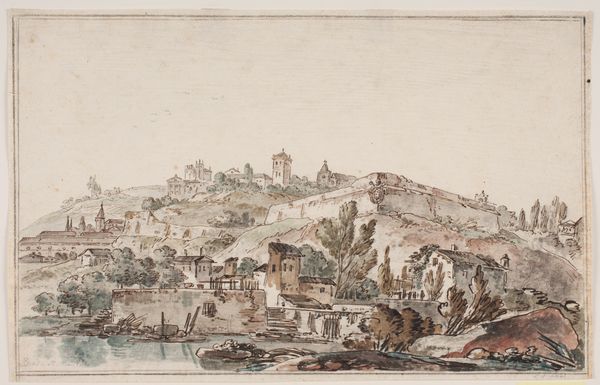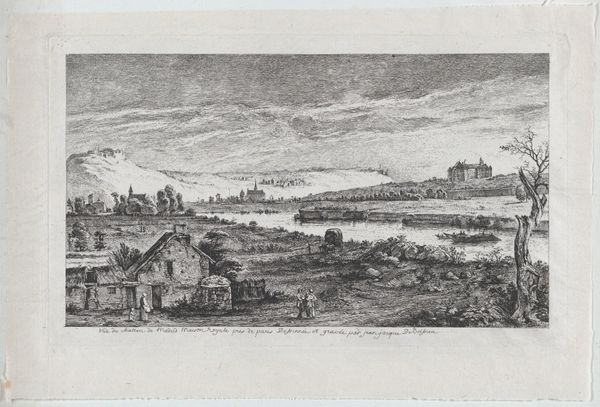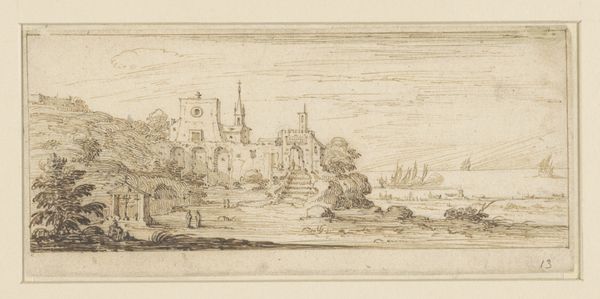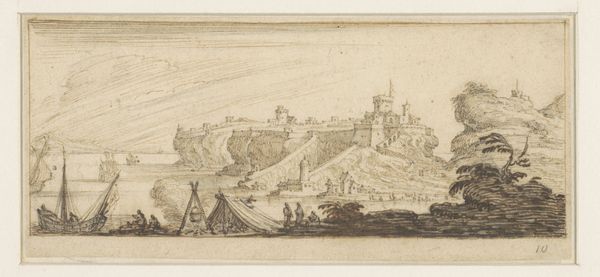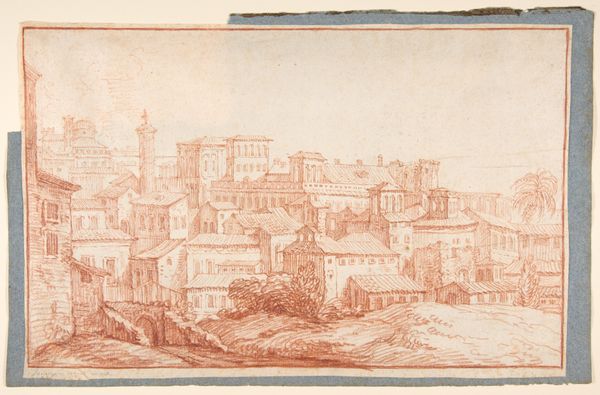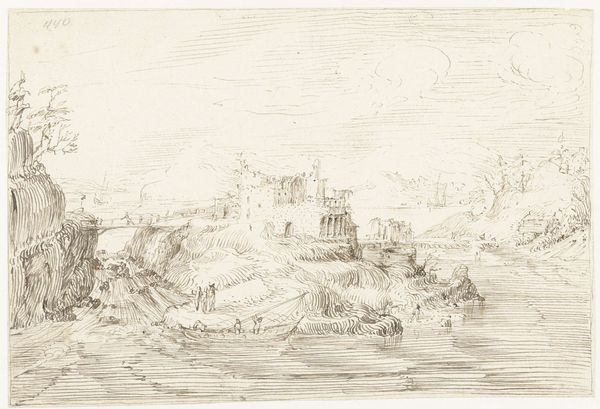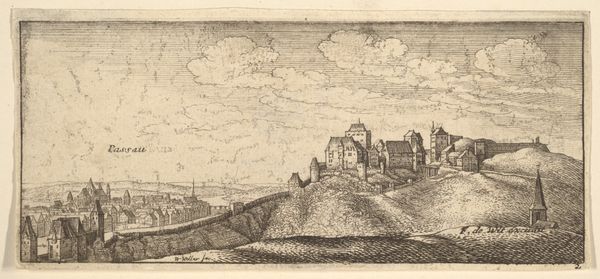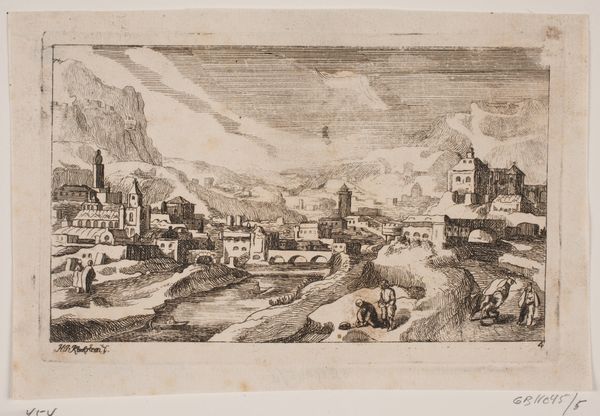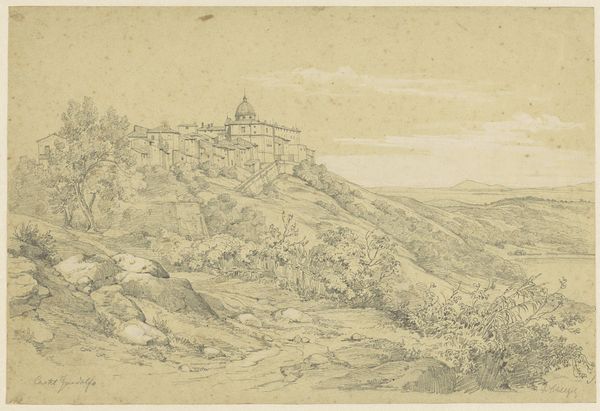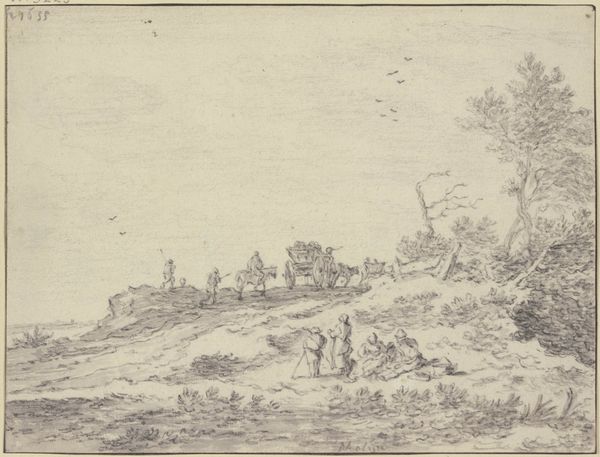
Kustgezicht met rechts een schip dat wordt opgekalefaterd 1631 - 1691
0:00
0:00
print, etching
#
baroque
# print
#
etching
#
landscape
#
etching
#
cityscape
Dimensions: height 83 mm, width 187 mm
Copyright: Rijks Museum: Open Domain
Curator: Looking at this etching from between 1631 and 1691, "Coastal View with a Ship Being Careened to the Right," now held at the Rijksmuseum, one is immediately struck by the dynamism captured in such a delicate medium. Editor: Delicate is not the word I’d use. Chaotic, maybe. It's all diagonals and restless lines; even the sky seems to be moving. The textural quality is astounding—almost tactile, given it’s an etching. Curator: That chaos speaks to the complexities of maritime life at the time. The bustling port scenes of the era represented immense geopolitical and social change. The act of careening—turning a ship on its side for repair—symbolizes vulnerability and the constant maintenance required for global power. It highlights not just maritime skills but labor systems. Editor: From a formal perspective, Silvestre creates an almost musical counterpoint between the grounded solidity of the town and the precarious angle of the ship, mirrored in the raking masts against the swirling vapor that rises from the hull. The contrasting masses generate movement, like the pull of the tides. Curator: I see the silhouetted figures on the shoreline and think about the individuals and communities invested in the ships. Maritime activity was central to their identity, offering a path to commerce but often demanding dangerous, exploitative labor. Who exactly benefited from this seascape? Editor: The meticulous detailing invites our gaze, doesn't it? The use of line invites an intricate exploration that seems intended for close, reflective consideration. The artist offers such a precise treatment of tonal values within the etching medium; one can practically distinguish varying materials. Curator: And how this vista participates in the glorification of global maritime domination! We mustn't forget that the so-called Age of Exploration resulted in exploitation and enslavement that transformed societies irrevocably. A bustling port often hid oppression in plain sight. Editor: It is a fascinating composition—viewed on its own, for what it is. But understanding those implications certainly enriches my reading of Silvestre's work. Curator: Indeed. For me, this etching makes palpable the tangible history of socio-economic tensions of the sea, a space always about crossing boundaries—physical, cultural, economic, political.
Comments
No comments
Be the first to comment and join the conversation on the ultimate creative platform.
